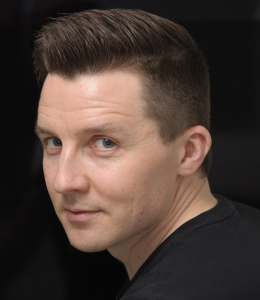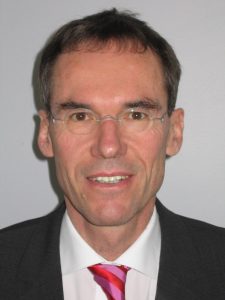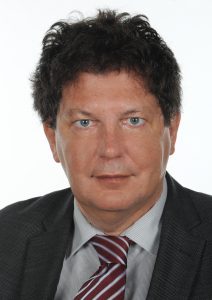Petri Ala-Laurila
Revealing the neural code: Linking single-photon signals to neural spikes and behavior in mice and men
 The Keynote Lecture of Prof. Petri Ala-Laurila is named “Ragnar Granit Lecture”. The Ragnar Granit Society founded the “Ragnar Granit Lecture” in honor of the Finnish Nobel Prize laureate Ragnar Granit. He received the Nobel Prize 50 years ago in 1967 with Haldan K. Hartline and George Wald “for their discoveries concerning the primary physiological and chemical visual processes in the eye”.
The Keynote Lecture of Prof. Petri Ala-Laurila is named “Ragnar Granit Lecture”. The Ragnar Granit Society founded the “Ragnar Granit Lecture” in honor of the Finnish Nobel Prize laureate Ragnar Granit. He received the Nobel Prize 50 years ago in 1967 with Haldan K. Hartline and George Wald “for their discoveries concerning the primary physiological and chemical visual processes in the eye”.
Ala-Laurila examines the neural circuits of the mammalian retina, an accessible part of the brain, to reveal fundamental principles of neural computation. Ala-Laurila and his team are tracking signals at single-quantum resolution through retinal circuits and correlating circuit function with the performance of the entire visual system as measured in behavioral experiments on mice and men. The major goal of his research line is to understand the key principles of neural coding at an entirely new resolution and level of quantification.
Ala-Laurila’s team uses a broad and unique set of methods. His research is a blend of electrophysiology, behavioural tests at different levels of the visual system, development of novel methods to track freely-moving animals, mathematical modelling of the retina, and psychophysics. Ala-Laurila’s work has an enormous potential well beyond his immediate goals.
Ala-Laurila’s research over the last decade has centered in the processing of sparse signals in the retina. He has a diverse educational background, which is a necessity in implementing such multidisciplinary research projects. He received his doctoral training at Helsinki University of Technology (now Aalto University) in 2000-2003 (Engineering Physics), whereby he has extensive knowledge of chemistry, physics and mathematics. He also has in-depth knowledge of neurobiology, having studied it at the University of Helsinki. He has also spent two consecutive four-year postdoctoral periods in the USA in top laboratories in Seattle and Boston (2004-2008, Laboratory of Dr. Carter Cornwall; 2008-2012, Laboratory of Dr. Fred Rieke). Currently he runs two different laboratories in Finland: one at University of Helsinki and one at Aalto University.
Ala-Laurila’s research has been published in high impact journals including Nature, Science, Nature Neuroscience, Nature Communications etc. In the year 2014, Ala-Laurilawas awarded the Academy of Finland yearly award for scientific courage. This prestigious award is granted annually to an outstanding researcher who has shown exceptional scientific audacity, creativity or innovation in research.
Olaf Dössel
Modeling, Mapping and Imaging of Bioelectric Signals of the Human Atria

Prof. Olaf Dössel received his PhD in Physics in 1982 from the University of Kiel, Germany. He joined Philips Research Laboratories in Hamburg, Germany as a scientist in 1982 and became head of the research group “Measuring Techniques” at Philips Research in 1985. Since 1996, he is full professor and director of the Institute of Biomedical Engineering at Karlsruhe Institute of Technology (KIT) in Germany.
His research involves computerized modeling of the heart (electrophysiology and elastomechanics), the inverse problem of Electrocardiography (ECG), ECG and electrogram biosignal analysis as well as bioelectric signals and fields in the human body. Dössel authored and co-authored over 800 scientific works including books, journal papers and conference contributions. His full publication record can be accessed at ResearcherID, Google Scholar and ORCID.
Dössel’s keynote talk at ICBEM & RGC 2018 will cover the topic of “Modeling, Mapping and Imaging of Bioelectric Signals of the Human Atria”. He will show how modeling, mapping and imaging can make profit from consequent combination: modeling will become more realistic by making use of maps that are acquired in daily clinical practice. Next generation of biosignal analysis of atrial signals will be guided by simulated signals. ECG imaging is currently improved by techniques of machine learning, and the training datasets are created with computer modeling. New algorithms of ECG imaging can be evaluated by maps acquired with multichannel catheters inside the atria.
He is active in various scientifc societies, such as the Berlin-Brandenburgische Akademie der Wissenschaften, the German Academy of Technical Sciences and the Nordrhein-Westfälische Akademie der Wissenschaften und Künste. He currently is the Editor-in-Chief of the Journal Biomedizinische Technik – Biomedical Engineering and is member of the Editorial Board of the Journal Medical & Biological Engineering & Computing.
Ferdinand Binkofski
Brain Stimulation – a Tool for Neuromodulation and Neuroplasticity
 Prof. Binkofski received his PhD (Habilitation) in 2001 from the faculty of medicine, Heinrich-Heine University Düsseldorf, Germany. From 1998, he was head of the group for functional magnetic resonance tomography research at the department of neurology, University Hospital Düsseldorf in Germany. In 2002, he became senior attendant and lecturer in the department of Neurology, University Hospital Schleswig-Holstein, Germany. From 2004 to 2010 he was C3 university professor for neuroimaging at the university of Lübeck, Germany. Since 2010, he is university professor for cognitive neurology and head of the division for clinical cognition research at the department of neurology at RWTH Aachen University in Germany.
Prof. Binkofski received his PhD (Habilitation) in 2001 from the faculty of medicine, Heinrich-Heine University Düsseldorf, Germany. From 1998, he was head of the group for functional magnetic resonance tomography research at the department of neurology, University Hospital Düsseldorf in Germany. In 2002, he became senior attendant and lecturer in the department of Neurology, University Hospital Schleswig-Holstein, Germany. From 2004 to 2010 he was C3 university professor for neuroimaging at the university of Lübeck, Germany. Since 2010, he is university professor for cognitive neurology and head of the division for clinical cognition research at the department of neurology at RWTH Aachen University in Germany.
Binkofski’s research interests include systems in cognitive neuroscience, functional, structural and metabolic imaging (fMRI, DTI, MRS, PET), neuromodulation using neuropsychological methods (TMS, tDCS), as well as affordances in interaction with objects or interface to robotics. He has authored and co-authored more than 140 papers published in peer-reviewed journals. He is also author of 22 book chapters and of 1 book.
His keynote talk at ICBEM & RGC 2018 will be entitled “Brain Stimulation – a Tool for Neuromodulation and Neuroplasticity”. Transcranial magnetic stimulation (TMS) and transcranial direct current brain stimulation (tDCS) are two techniques which allow modulation of brain activity in a controlled way. These techniques enable an increase of the activity (excitation) or decrease of the activity (inhibition) of dedicated brain areas. So, anodal tDCS and high frequency TMS (5 Hz and more) increase the neural activity, whereas kathodal tDCS and low frequency TMS (1 Hz) inhibit it. New TMS stimulation protocols including theta-burst stimulation allow to achieve these effects in much shorter time.
